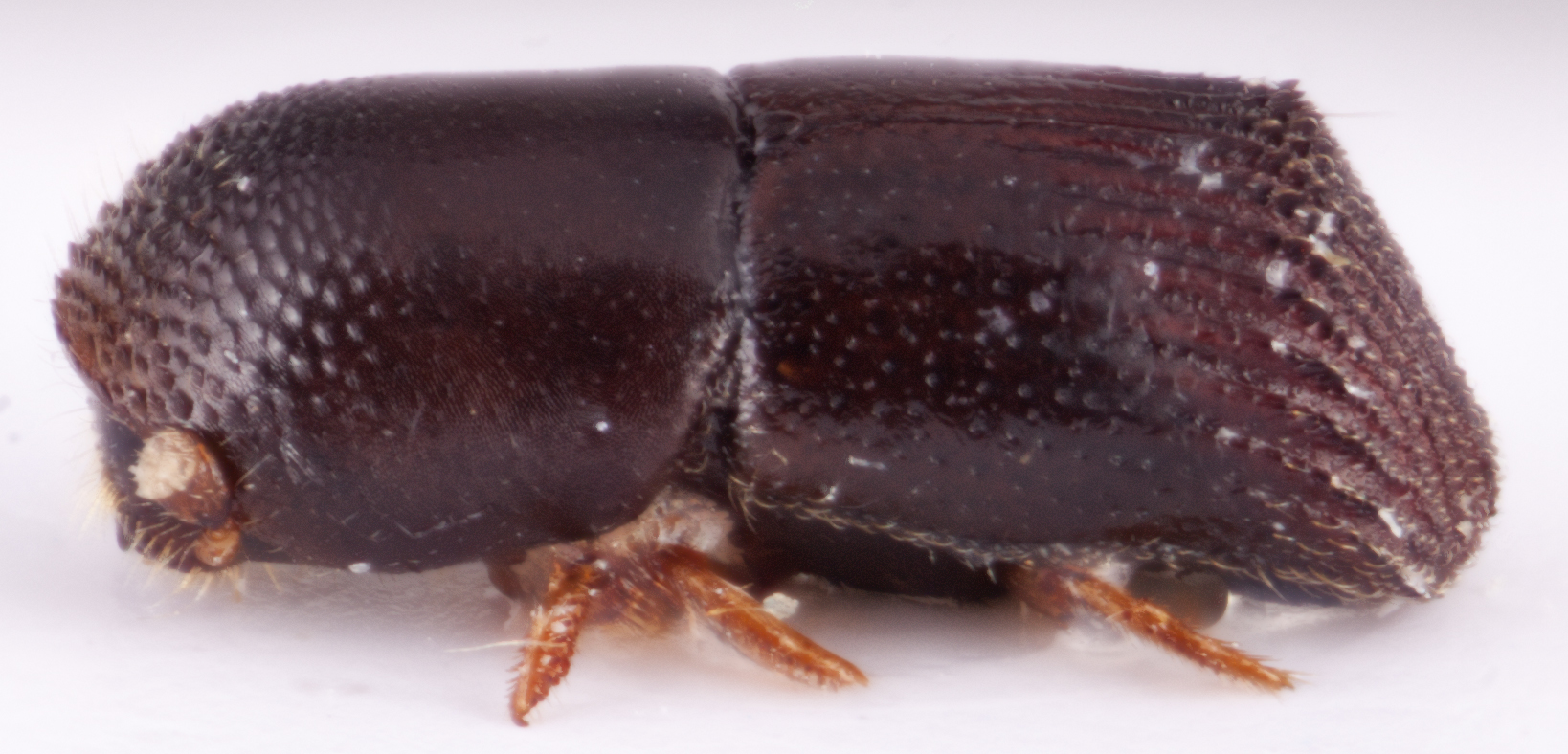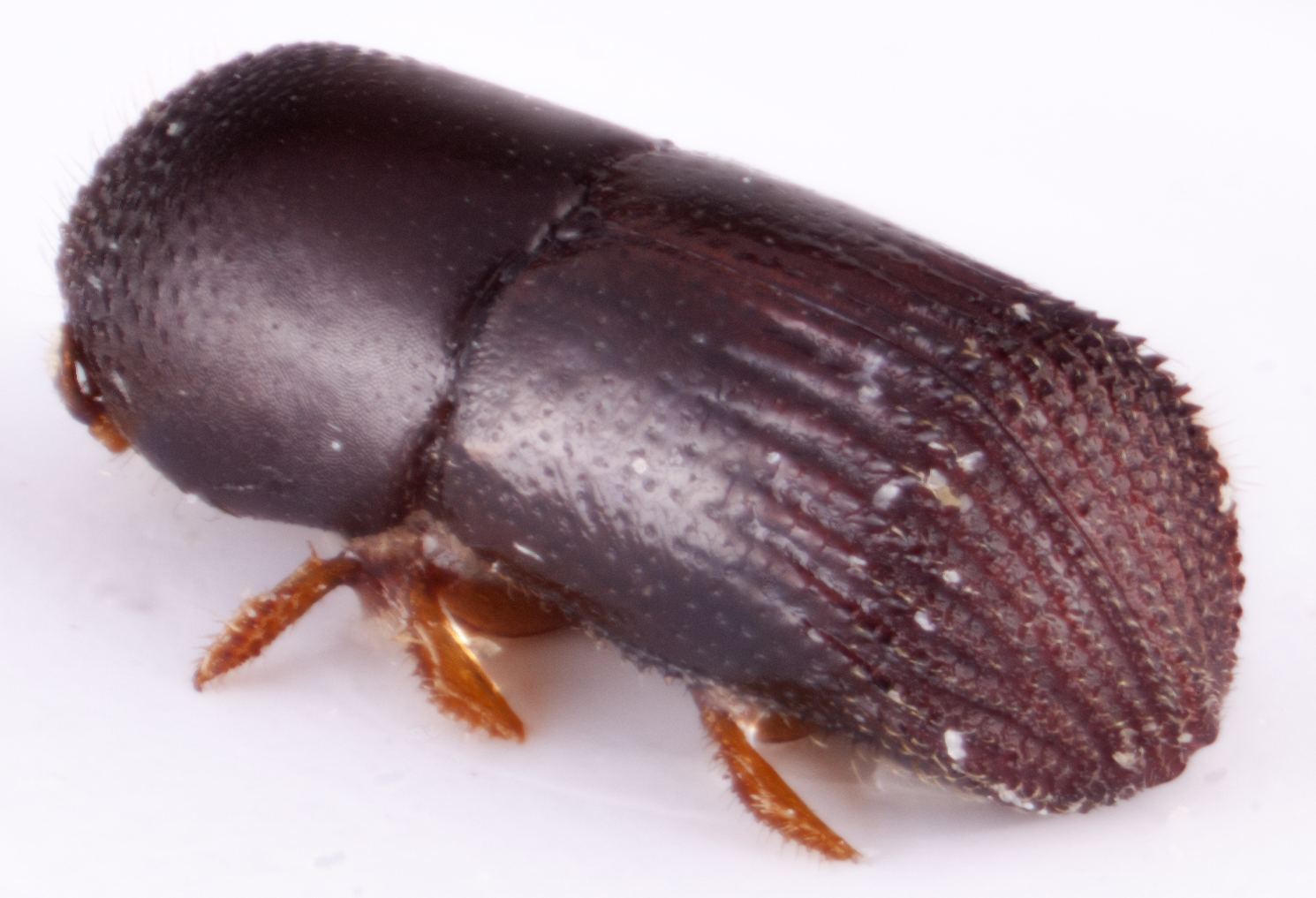Arixyleborus crassior
|
Arixyleborus crassior holotype lateral; R.K. Osborn |
|
Arixyleborus crassior holotype dorsal; R.K. Osborn |
|
Arixyleborus crassior holotype declivity; R.K. Osborn |
|
Arixyleborus crassior holotype frontal; R.K. Osborn |
Taxonomic history
Arixyleborus crassior Smith, Beaver & Cognato 2020 (in Smith et al. 2020bSmith et al. 2020b:
Smith SM, Beaver RA, and Cognato AI. 2020b. A monograph of the Xyleborini (Coleoptera, Curculionidae, Scolytinae) of the Indochinese Peninsula (except Malaysia) and China. ZooKeys 983: 1-442. https://doi.org/10.3897/zookeys.983.52630): 115.
Diagnosis
2.0 mm long (n = 1); 2.5 times as long as wide. This species is distinguished by the protibiaprotibia:
tibia of the first pair of legs
posteriorposterior:
toward the rear end; opposite of anterior
 face inflatedinflated:
face inflatedinflated:
blown up; distended
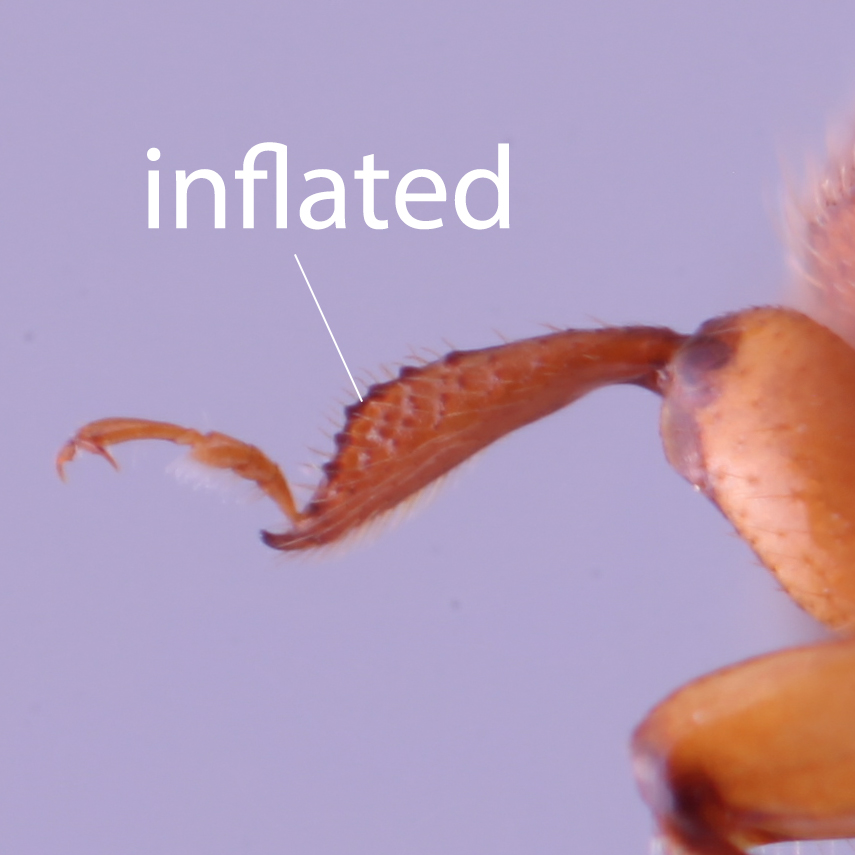 and granulate; antennalantennal:
and granulate; antennalantennal:
pertaining to the antennae
club broader than tall; pronotumpronotum:
the dorsal surface of the thorax
laterallateral:
pertaining to the side
 margin oblique; pronotumpronotum:
margin oblique; pronotumpronotum:
the dorsal surface of the thorax
anterioranterior:
the front or forward; opposite of posterior margin without serrations; and posterolateralposterolateral:
margin without serrations; and posterolateralposterolateral:
relating to end of the side part/portion
 carinacarina:
carinacarina:
an elevated ridge or keel, not necessarily high or acute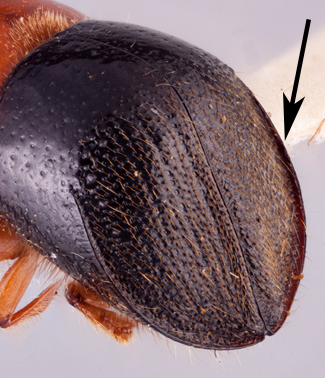 acute, granulategranulate:
acute, granulategranulate:
pertaining to a coarse, grainy surface texture
 .
.
It can be further distinguished from the closely related A. silvanus by the more stout form (2.6–2.7 times as long as wide in A. silvanus), more elongate pronotumpronotum:
the dorsal surface of the thorax
(1.3 times longer than wide vs 1.1–1.2 times in A. silvanus), the more finely granulategranulate:
pertaining to a coarse, grainy surface texture
 interstriae, moderately impressedimpressed:
interstriae, moderately impressedimpressed:
a depression in a surface
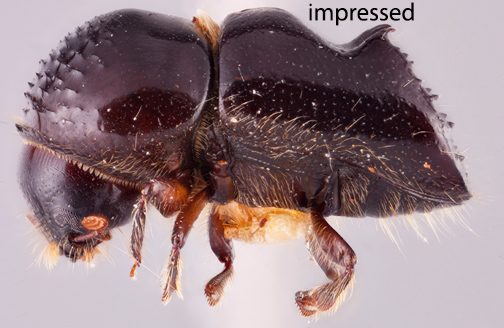 striae at the apexapex:
striae at the apexapex:
point or edge furthest from the body; opposite of base
 of the elytralelytral:
of the elytralelytral:
pertaining to the elytra
discdisc:
the flat central upper surface of any body part (e.g. pronotum and elytra) , and the presence of short coarse setaeseta:
, and the presence of short coarse setaeseta:
small hair-like or scale-like structure
on the declivitydeclivity:
downward slope of either the pronotum or elytra
 rather than fine hair-like setaeseta:
rather than fine hair-like setaeseta:
small hair-like or scale-like structure
. It can be further distinguished from the closely related A. mediosectus by the more stout form (2.86–3.33 times as long as wide in mediosectus) and short coarse setaeseta:
small hair-like or scale-like structure
on the declivitydeclivity:
downward slope of either the pronotum or elytra
 .
.
May be confused with
Arixyleborus mediosectus, A. phiaoacensis, and A. silvanus
Distribution
India (Arunachal Pradesh, Bihar, West Bengal)
Host plants
recorded from Castanopsis (Fagaceae) (Smith et al. 2020bSmith et al. 2020b:
Smith SM, Beaver RA, and Cognato AI. 2020b. A monograph of the Xyleborini (Coleoptera, Curculionidae, Scolytinae) of the Indochinese Peninsula (except Malaysia) and China. ZooKeys 983: 1-442. https://doi.org/10.3897/zookeys.983.52630)
DNA data
specimens not available for sequencing

